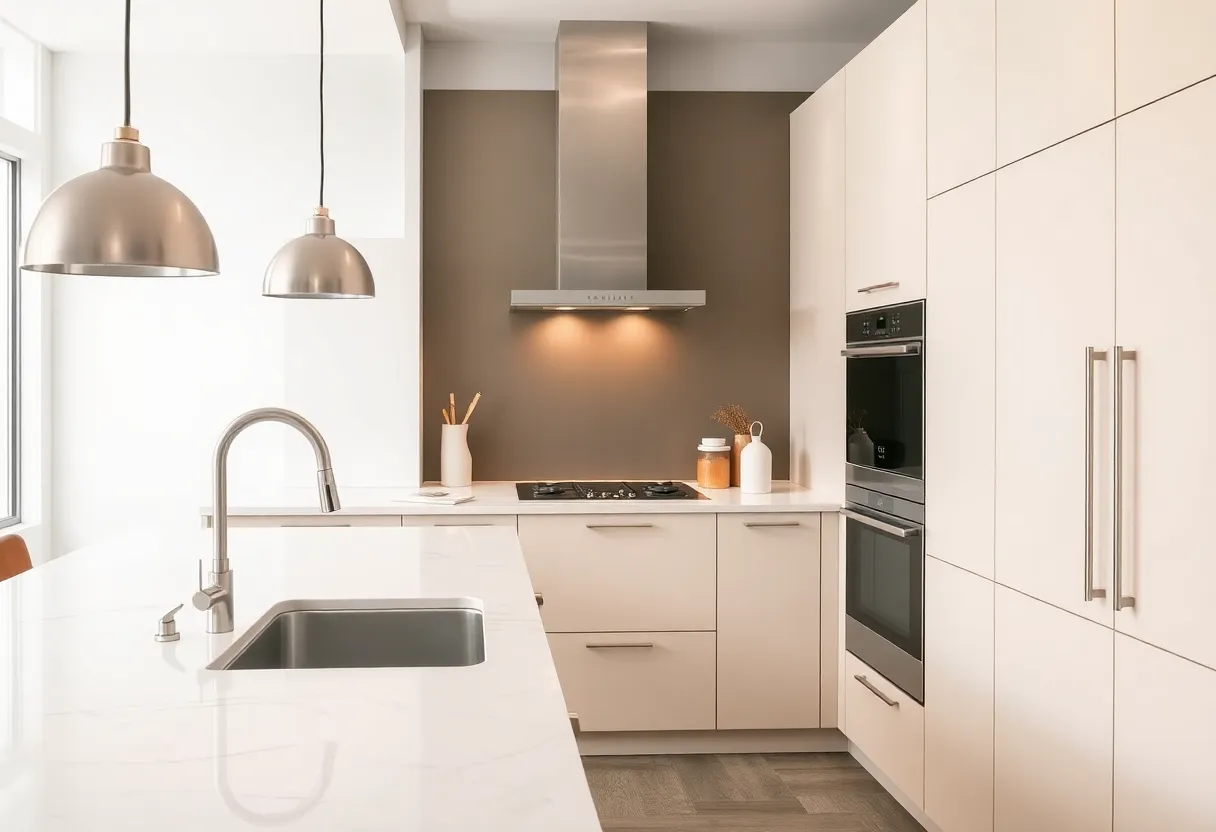Step-by-Step Guide to a DIY Kitchen Remodel: Save Money and Stay on Trend
Embarking on a diy kitchen remodel can be an exciting project that not only enhances your home but also improves your culinary space functionality. With careful planning and a clear strategy, you can achieve a modern kitchen without breaking the bank. This guide will provide you with essential steps to ensure your remodel is both effective and stylish.
Assess Your Current Kitchen
Before diving into the actual remodeling work, take a good look at your current kitchen. Identify what you like and what needs improvement. Consider the following:
- Functionality: Does the kitchen layout work for you? Is there enough storage?
- Style: What design elements do you wish to retain, and what do you want to change?
- Condition: Are there structural issues, such as plumbing or wiring, that need addressing?
Set a Budget
Your budget will dictate the scope of your diy kitchen remodel. Create a detailed list of potential expenses, including materials, tools, and any hired help. Allocate funds for:
- Cabinets and countertops
- Appliances
- Flooring
- Lighting fixtures
- Paint or wall finishes
- Hardware and accessories
Plan Your Design
Design planning is crucial. Create a layout that meets your needs while staying within your budget. Consider the following:
Kitchen Layout
Common layouts include:
- U-Shaped: Provides ample counter and cabinet space.
- L-Shaped: Efficient for smaller spaces and ideal for an open concept.
- Galley: Perfect for narrow kitchens, streamlining workflow.
Style Considerations
Decide on a design theme. Whether modern, rustic, or minimalist, choose elements that resonate with your aesthetic. Look for inspiration in magazines, online platforms, and home improvement shows.
Color Schemes
Color can dramatically affect your kitchen’s ambiance. Neutral colors tend to provide a timeless look, while bold colors offer a modern flair. Pairing colors strategically can enhance light and space.
Gather Tools and Materials
Before starting your diy kitchen remodel, ensure you have the necessary tools. Typical tools required include:
- Drills
- Hammers
- Screwdrivers
- Measuring tape
- Level
- Utility knife
Purchase materials based on your design and budget. Sources for materials include local home improvement stores, online retailers, or second-hand markets.
Demolition and Preparation
Begin with the demolition of unwanted fixtures and structures. Clear out cabinets, appliances, and countertops. Be cautious during this process as it can reveal hidden plumbing or wiring that may need to be addressed.
Electrical and Plumbing Adjustments
If planning to change the arrangement of appliances or fixtures, enlist a professional for any electrical or plumbing alterations. This ensures that all work is up to code and safe.
Install New Elements
With the structural work complete, you can start installing your new elements. The sequence often follows:
Cabinets and Countertops
Securely install cabinets first, as they will set the tone for the subsequent installations. Ensure they are level and properly anchored. Subsequently, install countertops adhering to the manufacturer’s instructions.
Appliances
Choose energy-efficient appliances that match your kitchen’s design. Proper placement is crucial for functionality and workflow.
Flooring
Floor installation may vary based on material chosen. Whether using tiles, laminate, or wood, ensure proper subfloor preparation for durability.
Lighting and Fixtures
Lighting can enhance the kitchen’s aesthetic. Consider under-cabinet lights for functionality and elegant fixtures for style. Ensure all electrical connections comply with safety regulations.
Add Finishing Touches
Complete your diy kitchen remodel by painting the walls and adding hardware to cabinets and drawers. Select decor that complements your design, such as curtains, rugs, or wall art. Accessories can add personality to your kitchen space.
Final Inspection
Once all installations are complete, conduct a thorough inspection of your work. Check for functionality in all appliances and fixtures, and ensure that everything meets safety standards. This final step is essential to ensure that your remodeled kitchen operates efficiently.
Enjoy Your New Kitchen
Your diy kitchen remodel journey has culminated in a space that is uniquely yours. Enjoy your newly remodeled kitchen as both a functional area for cooking and a space for gathering with family and friends.
Maintenance and Upkeep
To maintain your newly remodeled kitchen, regularly clean surfaces, check for any leaks, and routinely inspect appliances. Staying proactive can prolong the lifespan and beauty of your kitchen.
By following these outlined steps, you can undertake a diy kitchen remodel with confidence, ensuring that your project is both cost-effective and in line with current trends.








